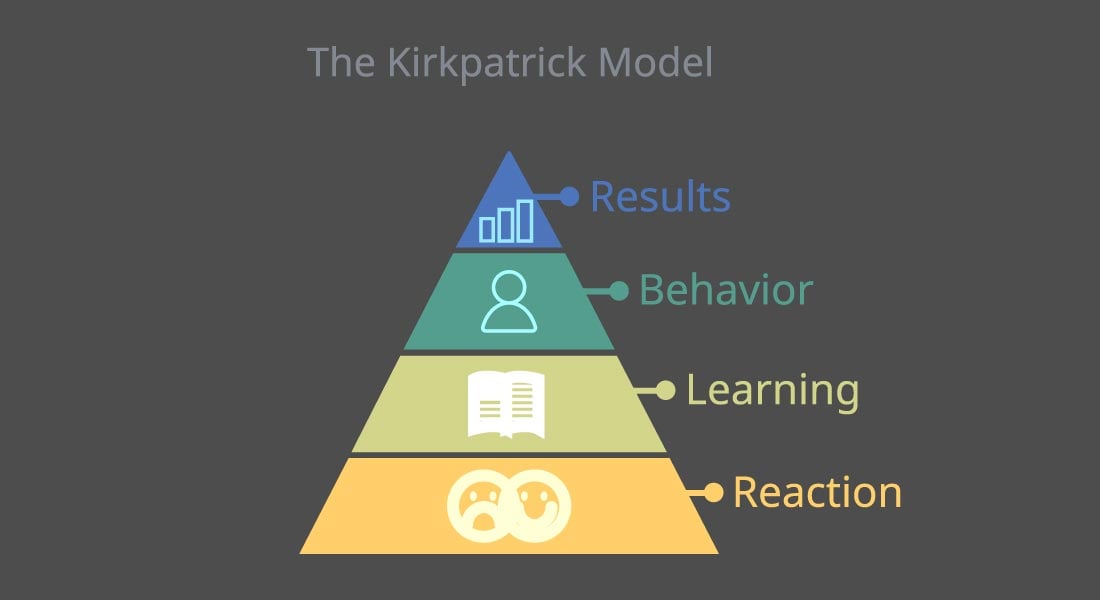What the Phillips Model Adds to the Kirkpatrick Model of Training Evaluation

Conducting corporate training without proper and effective learning outcomes is a futile effort. The purpose of providing employee training is to help the employees bridge the gap between the current and required skills so that they are able to contribute towards the desired business goals. Having a clear and thorough understanding of the concepts augments employees’ productivity and performance, thereby improving the training ROI.
→ Download Template: Align Training with Business Goals for Max Impact and ROI
In the third part of this series, we looked at the pros and cons of the Kirkpatrick model of Training Evaluation and concluded that the model continues to be one of the most powerful tools used extensively by the ones who know to evaluate their corporate training programs.
I wanted to talk about integrating the Phillips ROI model with the Kirkpatrick model. As promised, here it comes.
Any business assesses success by looking at its bottom line, the Return on Investment (ROI), which indicates the growth (or otherwise) of a company. And this also holds true for training assessment.
According to the Association for Talent Development's (ATD) 2024 State of the Industry report, the average organization spent $1,283 per employee on workplace learning in 2023, marking a $63 increase from 2022. This increase reflects a growing emphasis on professional development and investment in new learning technologies and methods. Given this context, it is crucial for organizations to measure the return on their investments.
Table Of Content
- Benefits of Determining Training Effectiveness in Corporate Training
- How the Phillips ROI Model Enhances the Kirkpatrick Model
- The Kirkpatrick Model vs. the Phillips ROI Model
- Why Use the Phillips ROI Methodology?
Benefits of Determining Training Effectiveness in Corporate Training
- It helps you understand if your training strategy is on the right track or needs some changes.
- Measuring training effectiveness allows you to evaluate the employee performance and its contribution to business results. So, you can assess the training ROI.
- It enables you to identify and address any shortcomings for further training ventures.
- It helps you ensure that everyone complies with the training standards that your business has established.
- It provides insights into the viability and positive influence of new learning strategies and training programs.
With these benefits, it’s evident that evaluating the effectiveness of corporate training solutions is crucial for achieving impactful and productive outcomes. It enables the L&D professionals to set clear learning objectives and also plan and improve their learning strategies accordingly.
Create an everlasting impact by knowing how to align L&D and business. Check now!
How the Phillips ROI Model Enhances the Kirkpatrick Model
The Phillips ROI model which adds an additional fifth level to the Kirkpatrick model of evaluation helps address this very issue.
Jack J. Phillips, Chairman of the ROI Institute and a world-renowned expert on measurement and evaluation was the one who devised the Phillips ROI model.
The model offers a practical method to accurately measure the potential return on investment (ROI) of a training program even before any investments are actually made.
So, what does the Phillips ROI model add to the Kirkpatrick model? In addition to the four questions asked by the Kirkpatrick model…
- Did the learners enjoy the training? (Employees’ reaction to training)
- Did knowledge transfer occur? (Skills and knowledge acquired)
- Did the training change learners’ behavior? (Application of the knowledge on-the-job)
- Did the training impact business results? (Impact on the business)
The Phillips methodology asks a fifth question: Was the training worth the cost? (Business results versus training costs or ROI).
Comparing the Phillips ROI Model and Kirkpatrick Model
The Kirkpatrick’s model of training evaluation measures reaction, learning, behavior, and results. The Phillips methodology measures training ROI, in addition to the first four levels of the Kirkpatrick’s model.
The Kirkpatrick Model vs. the Phillips ROI Model
|
Level |
Kirkpatrick Model |
Phillips ROI Model |
|
1 |
Reaction |
Reaction, satisfaction, and planned application |
|
2 |
Learning |
Learning |
|
3 |
Behavior |
Behavior, application, implementation |
|
4 |
Result |
Business impact |
|
5 |
N/A |
Return on Investment (ROI) |
Understanding the five levels of the Phillips ROI Model:
Level 1: Reaction & Planned Application
Like the Kirkpatrick’s model, the Phillips ROI model also starts with evaluating learners’ reaction to the training with the help of questionnaires or surveys.
Level 2: Learning
The second level of the Phillips ROI model, like the Kirkpatrick’s model, evaluates whether learning took place – using tests or quizzes before and after the training.
Level 3: Application and Implementation
While level 3 of the Kirkpatrick model merely assesses whether participants are applying what they learned on-the-job, the Phillips ROI model looks at the application of the learning along with its implementation. This will help determine, in case of a problem, where the issue is – in the application of the learning or its implementation.
Level 4: Business Impact
We’ve already seen that the fourth level of the Kirkpatrick model focuses only on results. And as I said in my previous blog, it is very difficult to link a particular training to business results with 100% accuracy. The Phillips ROI model takes a much broader view at the impact of the training on the organization and helps us identify whether factors other than training (a new product, seasonal demand, etc.) were responsible for the improved business results.
Level 5: Return on Investment (ROI)
The fifth level of the Phillips ROI model helps determine the value of training programs through a cost-benefit analysis – whether the money invested in the training has produced any returns, and if so, the nature of the returns.

Align Training with Business Goals
Editable Questionnaire to Help You Make the Right Choice!
- Identify organizational goals
- Check what your people need to do achieve those goals
- Identify SMART learning objectives to fill performance gaps
- Design for impact
Why Use the Phillips ROI Model?
According to Jack Phillips, an efficient training program must set off a chain of impact – starting with employees’ reaction to training, learning and its application, its impact on business, and finally, to the ROI of the corporate training program. Organizations cannot afford to skip any of the levels of evaluation. Each level must be evaluated and measured, and the results converted into a monetary value. This is because, if a detailed evaluation is not done at each level, it would be difficult to attribute (with conviction), the success of a business to the training program.
But unfortunately, in most organizations, evaluation of a training program starts and ends with the first level (reaction to learning) with supervisors/managers informally asking employees how they liked the training program.
You may ask, “What’s wrong with this?”
What’s wrong is that when we limit evaluation of a training program to offhand reactions from learners, we cannot really gauge the efficacy of the training program and so, cannot make any significant changes to the program.
And if there is a negative ROI, it would be impossible to identify the culprit(s) – the break in the chain of events – that are hindering a positive return on investment.
Discover the key challenges Learning and Development (L&D) teams face when striving for positive ROI and how to overcome them in this video.
As I mentioned earlier, this model advocates converting every level 4 measurement into a monetary value to place a cost on everything (e.g., cost savings and time savings). But there will always be those intangible measurements that one cannot place a monetary value on – for instance, customer satisfaction, a good work environment, employee satisfaction – all very important outcomes but hard to put a value on. These must be noted as ‘intangibles’ and taken into consideration as well.
The Phillips model focuses on the collection and analysis of data from the first four levels, with special emphasis on the fourth and the fifth levels – business impact and ROI.

The cost of the training can then be compared with the monetary benefit, giving an indication of the value of the training, and its impact on the organization’s bottom line.
In part 5 of this series, we will take a deeper look into the Phillips ROI Methodology and how ROI is calculated.
Final Thoughts
To sum it up, adopt a practical training evaluation method to precisely evaluate the potential return on investment (ROI) of an employee training program even before any investments are made. Ensure your training initiatives are driving real results by using our template for Aligning Training to Business Goals—get it now!





